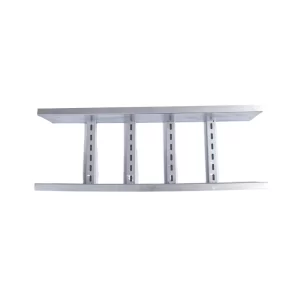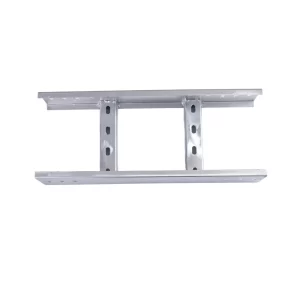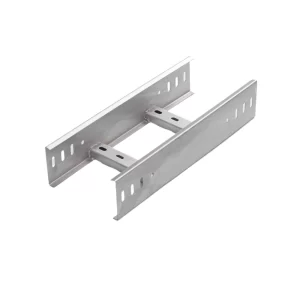When discussing cable management systems, particularly within the context of commercial and industrial settings, two common types of cable trays that are frequently mentioned are ladder trays and perforated trays. While both serve the purpose of supporting and organizing cables, they differ significantly in design, functionality, and application suitability. Understanding these differences is crucial for selecting the appropriate cable tray system that best meets specific project requirements.
Ladder Tray: The Backbone of Cable Management
A ladder tray, also known as a cable ladder, is one of the most widely used cable management systems. Its design is reminiscent of a ladder, featuring parallel side rails connected by rungs at regular intervals. These rungs act as horizontal supports for cables, allowing them to be laid across the length of the tray.
Key Features of Ladder Trays:
1. Open Design: The open structure of ladder trays facilitates easy access to cables for installation, maintenance, and inspection. It also promotes air circulation, which is beneficial in terms of cooling cables and reducing the risk of overheating.
2. Load Capacity: Ladder trays are known for their robustness and high load-bearing capacity. They can support substantial weights, making them ideal for heavy-duty applications where multiple cables or larger cable bundles need to be accommodated.
3. Versatility: Due to their modular nature, ladder trays can be easily extended or modified on-site. This flexibility makes them suitable for both new installations and retrofits.
4. Cost-Effectiveness: Ladder trays are generally less expensive than other cable tray types because they require less material and are quicker to install.
Perforated Tray: Precision in Cable Management
Perforated trays, on the other hand, have a solid base with numerous perforations or holes drilled into it. These holes allow for the passage of cables while still providing a degree of enclosure around the wires.
Key Features of Perforated Trays:
1. Protection and Containment: The solid bottom of a perforated tray offers more protection against dust, debris, and accidental damage compared to ladder trays. This feature is particularly advantageous in environments where cleanliness is crucial or when dealing with sensitive cables.
2. Cable Management: The perforations in the tray enable more controlled routing of cables. They can be threaded through the holes, minimizing cable movement and preventing tangling.
3. Customization: Perforated trays come with varying hole patterns and sizes, allowing for customization based on the type and size of cables being managed. This customization can lead to better organization and reduced cable interference.
4. Environmental Suitability: Perforated trays are often chosen for applications where environmental factors such as moisture, dust, or temperature fluctuations need to be controlled. The partial enclosure provides a barrier against external elements while still allowing for ventilation.
Choosing Between Ladder and Perforated Trays
The decision between a ladder tray and a perforated tray largely depends on the specific requirements of the installation environment and the type of cables being managed.
Ladder Trays are typically preferred for applications where:
High load-bearing capacity is required.
Easy accessibility and quick installation are priorities.
The environment does not pose significant threats to cable integrity (e.g., excessive dust or moisture).
Perforated Trays are more suitable for scenarios where:
Enhanced cable protection is necessary.
Controlled cable routing and organization are important.
The environment necessitates measures against dust, moisture, or other contaminants.
Both ladder trays and perforated trays have their unique advantages and are designed to cater to different aspects of cable management. By understanding the specific features and benefits of each, professionals can make informed decisions that optimize cable organization, enhance system reliability, and ensure cost-effectiveness in their installations.




